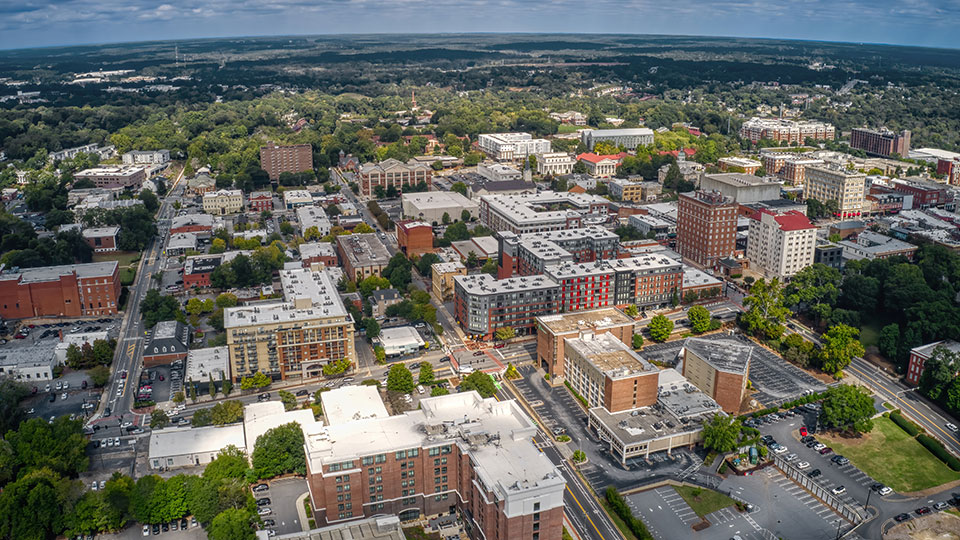
Series: How the Changing Economic Climate Affects GCs
The future is brightening for the construction industry. Economic forecasts reveal healthy growth in employment, wages and benefits, and construction spending, in addition to innovation in the distribution, supply chain and retail landscapes. Though these factors are on the rise, the positive industry outlook is not without its unique set of challenges.
To help general contractors decipher these mixed messages and stay informed on issues that affect them on and off the jobsite, we’ve identified key areas of change: labor, retail, building structural trends, and technology. As part of a new series, this post introduces how the changing economy affects GCs. We’ll follow up with subsequent posts that give a deeper dive into each topic.
Labor
After a years long downturn, firms have started hiring again, which has resulted in improved wages and benefits as competition heats up between construction firms to retain skilled workers. Although employment projections from the Bureau of Labor Statistics expect growth to be strong, with a 21.8% increase through 2022, the cost and availability of labor is expected to be an issue in 2014. According to a survey from Associated General Contractors, 74% of contractors are concerned that there won’t be enough skilled workers in their area.
Another report from AGC predicts total construction spending will increase between 6 and 10% per year from 2014 to 2017. With labor resources tight and a shrinking pool of workers, GCs are challenged to find quality craftsman to support increased demand. Many contractors attribute the shortage in skilled workers to the lack of quality, technical-based training and vocational school programs for young adults. The March 2014 issue of Builder magazine speaks to the fact that fewer young people are choosing construction as a career path. To address worker shortages, many firms are getting directly involved in local job training programs, mentoring and internships.
Retail and Distribution
Regardless of your industry, innovation is key to success. Emphasis on adapting to the latest technology is placed not only on contractors, but also on the distributors and retailers that serve them. Efficient distribution is a must for GCs, and the increasing importance of logistics and automation will continue to impact how they operate.
The changing landscape of the retail industry is reshaping the way GCs do business. Brick and mortar stores are feeling the pressure to adopt the latest technology that can match the convenience and logistical advantages of working with online merchants. GCs can expect to see more digital integration on showroom floors, like interactive videos and 360 degree views that help products come to life in-store.
Building Trends
The ongoing growth in ecommerce and digitally integrated retail programs also impacts the commercial real estate sector. Among the commercial real estate predictions outlined by CNBC, traditional malls will be redeveloped into multi-functional city centers as they lose traction to online shopping, there will be more focus on medical-related facilities due to aging baby boomers, and office complexes will operate as “smart buildings.”
CNBC’s report also predicts that sustainability will become a common practice, projecting that within 25 years, all buildings will need to meet LEED standards, which may require existing structures, especially from the 80s, to be retrofitted or torn down.
Technology
Advancements in technology and innovation play an underlying role in almost every aspect of the economic climate. The concept of Building Information Modeling (BIM) has gained popularity in the building industry in the past decade, and, more recently, in the field by contractors, subcontractors, and facility owners and operators. Just as we saw computer-aided design (CAD) replace conventional hand drawings, BIM is now the next evolution in construction and design.
As with any technology that becomes mainstream, it’s important that each participant in a project build, including contractors and facility owners, can take advantage of its benefits. Contractors who have knowledge and experience with BIM can set themselves apart from the competition and, ultimately, help win the bid. Click here to read more on benefits of BIM for the contractor.
Although the building and construction landscape continues to evolve, we can be certain that the GC’s ability to adapt to and embrace new technology will be a defining factor in his or her success.
What are your predictions on how the improving economy is affecting GCs? What trends are you seeing in your local market? Share with us here.

L&W Supply Announces the Opening of Its Athens, Georgia, Location
Esteban Garcia manages the newest location CHICAGO – November 18, 2024 – L&W Supply, a nationwide distributor of interior building materials and construction supplies, has opened a new location at 316 Commerce Blvd., Athens, Georgia. Esteban Garcia manages the new location. Garcia joined L&W Supply in November 2021 as an outside sales representative through an […]

L&W Supply Announces the Opening of Its First Iowa Location in Cedar Rapids
Noah Burger manages the newest location CHICAGO – September 5, 2024 – L&W Supply, a nationwide distributor of interior building materials and construction supplies, has opened a new location at 1203 9th Street SW, Cedar Rapids, Iowa. Noah Burger manages the new location. Burger joined L&W Supply in 2021 after completing his Bachelor of Business […]